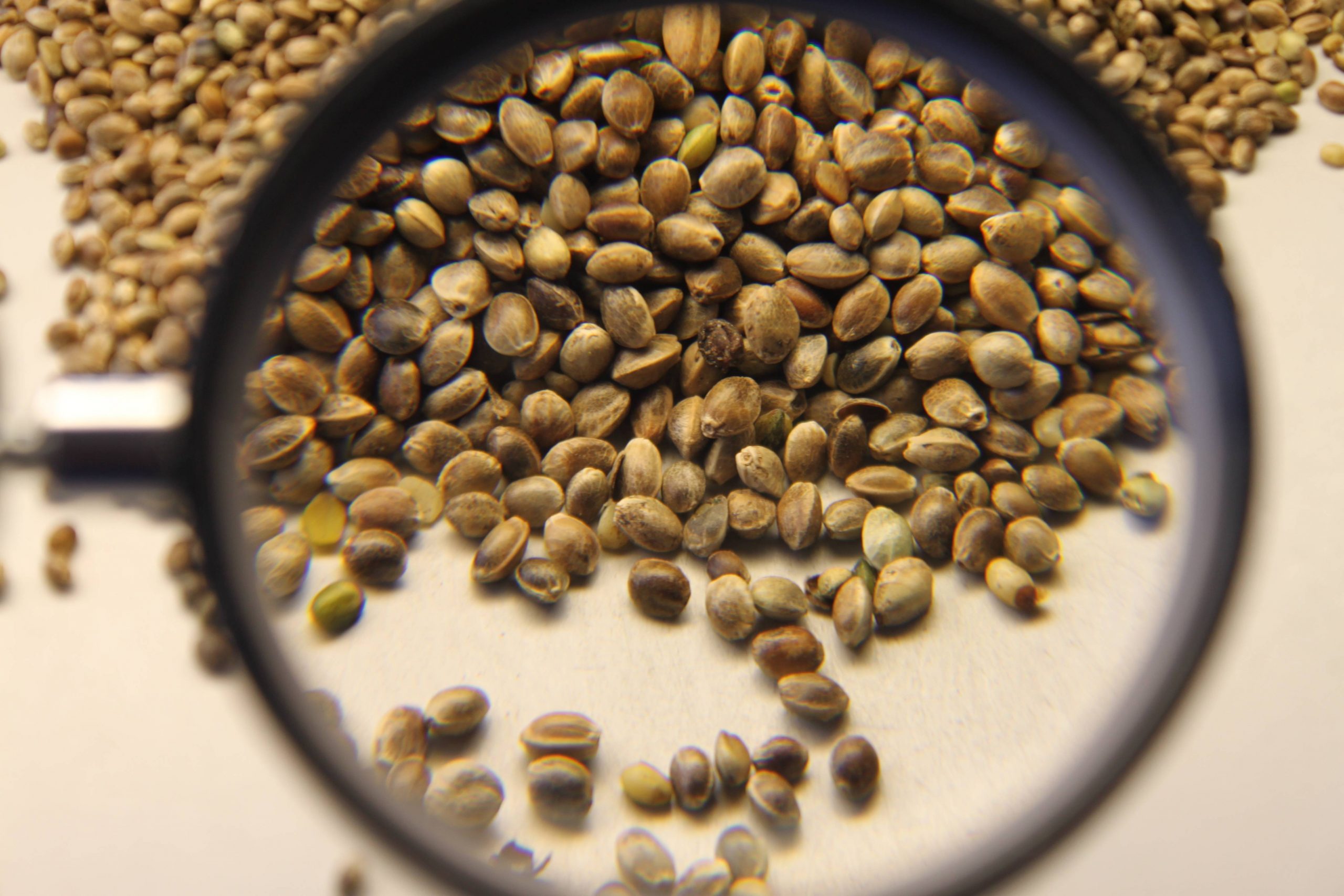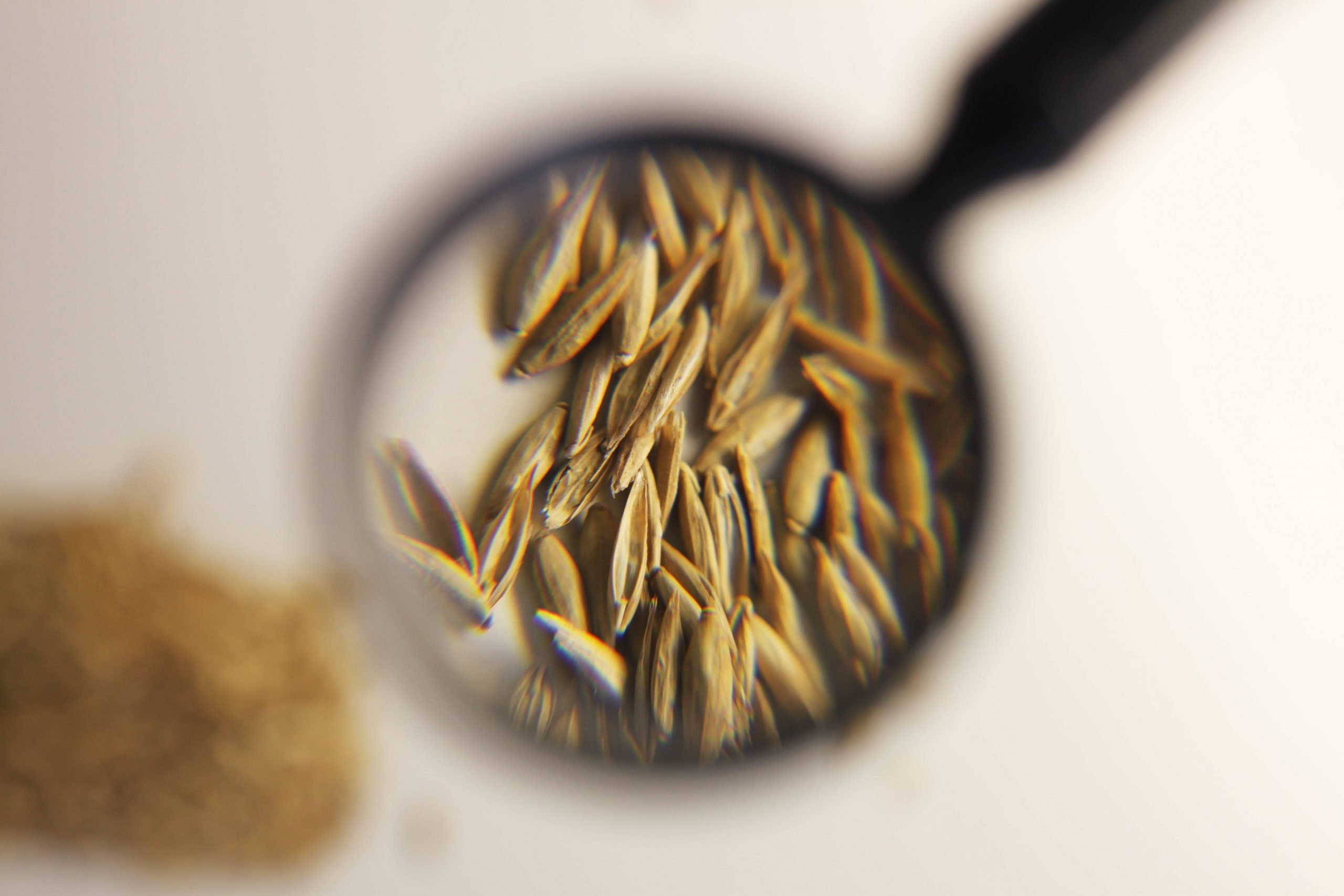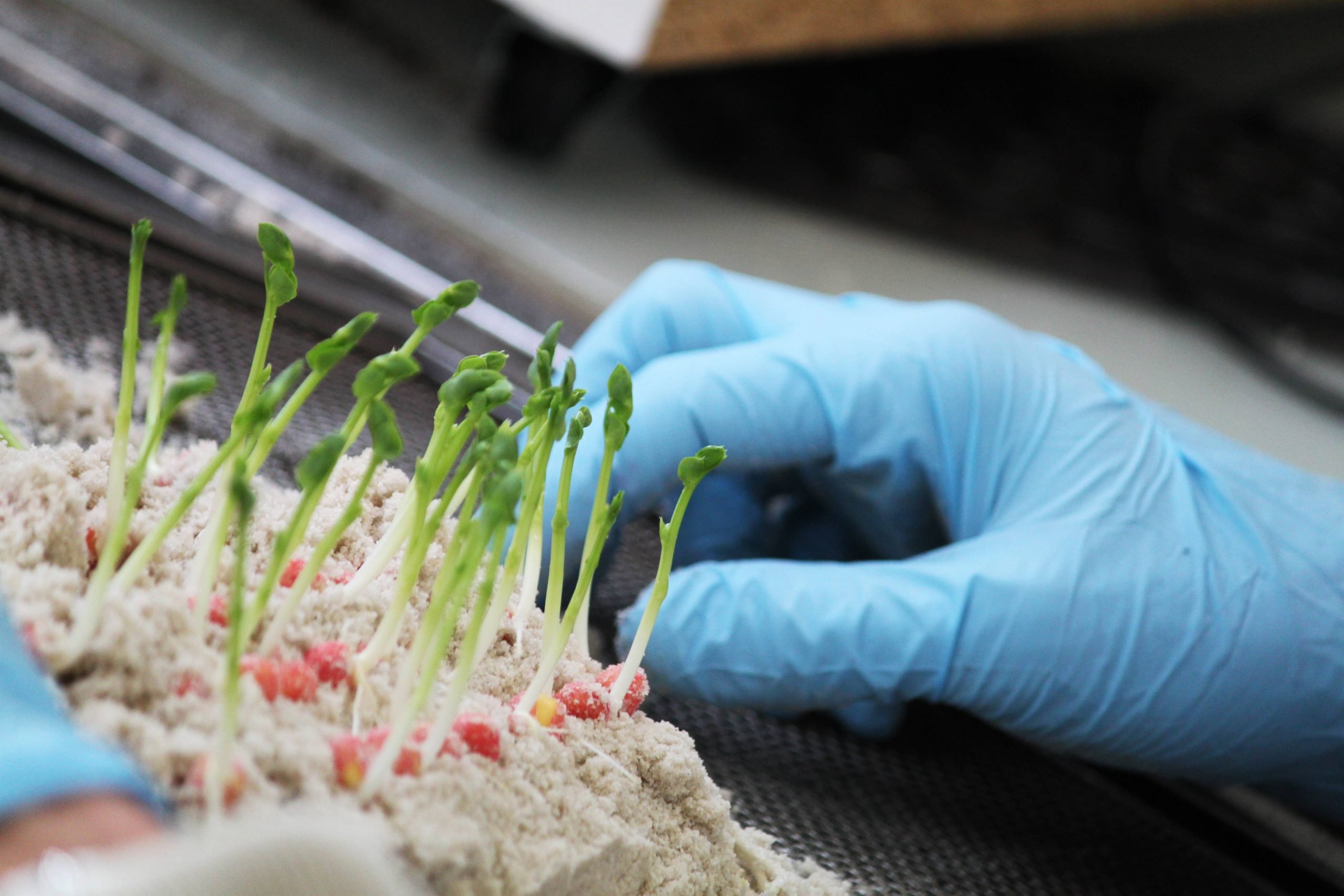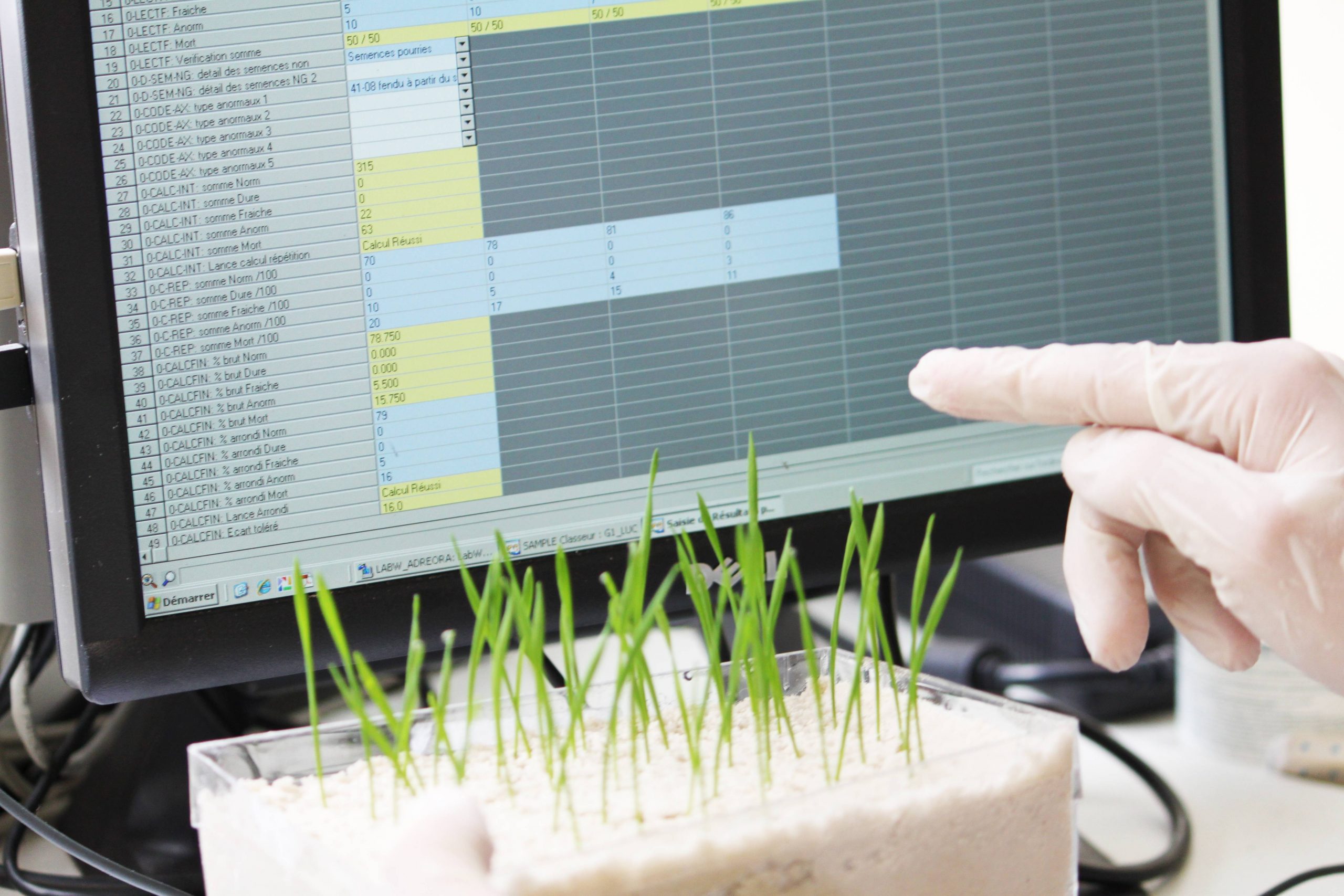What is seed quality?
The core business of the SNES at GEVES is seed quality testing. So what exactly is seed quality?
Seed quality
Remember growing beans in cotton and water when you are younger? This is often how it starts: planting a small seed in a pot and waiting to see a tiny green shoot out. On a much larger scale, it is the farmer who sows his fields with the aim of a “good” harvest. Seeds are the reproductive organ for plants. They come from the flower, and contain a miniature version of everything needed to form a new plant: root, stem, leaf and bud. The seed can also contain reserves and other components to help the new plant emerge and grow. All these things will decide whether a plant is cultivated for food, animal feed, or other uses. To choose the right seed, farmers need to ensure the seed’s variety, its ability to form good, healthy plants, and a reasonable probability of a high-quality harvest.
| Liste | Définitions | Nb de variétés au 30/06/2017 |
| A | Variétés dont les semences peuvent être multipliées et commercialisées en France et par extension en UE
| 2935 soit 80% |
| B | Variétés dont les semences peuvent être multipliées en France en vue de leur exportation hors de l’UE
| 681 soit 19% |
| C | Variétés de conservation cultivées traditionnellement dans des régions spécifiques et menacées d’érosion génétique (DHS allégée).
| 11 dont 10 variétés de pomme de terre et 1 mais (population Lacaune) |
| P | Parents d’hybride pour les céréales à paille | 7 |
| V | Associations variétales dont les semences peuvent être multipliées et commercialisées en France, et par extension en UE
| 2 variétés de colza |
Pour répondre aux besoins de certains utilisateurs, il existe en plus du catalogue officiel, la liste des Variétés à Usage Industriels Réservés :
| Liste | Définitions | |
| I | Liste I ou liste VUIR, Variétés à Usages Industriels Réservés (arrêté du 30 août 1994)
|

Seed: plant potential and a technological product
To produce high-quality seed, it is necessary to:
- Control field production and ensure varietal identity (tested by molecular biology tools)
- Sort the seeds produced to obtain a lot of clean seeds (with only the seeds of the species and the desired variety)
- Test the seed lot to check the effectiveness of sorting, ensure purity, germination and in some cases seed health. Biochemistry tools can also provide information on the technological quality of seed.
Field seed production is based first and foremost on the work of the seed multiplier. A specific device keeps track of upstream and downstream production. Field control is carried out upstream by precise mapping of seed planting to avoid unwanted crossing. This takes neighbouring cultures into account. In vegetation, the field is controlled several times (control on foot). After the harvest, seeds are sorted and seed batches are approved. When the sorting operations are completed, the seeds can be primed either with a simple coating or with a film coating of crop protection or biostimulant treatment.
Throughout these stages of production, the seeds are controlled in the laboratory. At the end of these operations and before marketing, the seed lots undergo laboratory product control testing. Controls are carried out within the regulatory framework, and seeds and certified in accordance with regulatory standards.
Seed quality criteria
In the laboratory, the first quality criterion is purity. The objective: to have the purest seeds possible of the species in the lot. This criterion is essentially based on a visual analysis. It consists of separating the sample into three fractions: pure seeds, seeds of other plants and inert materials. The result of the analysis is a percentage by weight for each of these fractions. This first analysis is often coupled with a second analysis: enumeration. Within the “seeds of other plants” fraction, the aim is to identify the seeds as precisely as possible, at the finest taxonomic level. The result is given in the form of a list of identified species and their proportion.


After purity analysis, the sample is ready to undergo further tests to examine its physiological qualities. Germination is the key criterion: under optimal conditions (defined by ISTA international rules), what is the highest level of germination that the sample is able to achieve?
Depending on the species, a certain number of seeds are put to germinate. At the end of a fixed period, a count of the seedlings meeting normality criteria is carried out. Abnormal or ungerminated seedlings are counted specifically.
Seed health is also essential for species whose seeds may be disease vectors for crops. Specific analyses are used depending on the pathogen in question. Mycology (study of search), bacteriology (study of bacteria), virology (study of viruses) or nematology (study of nematodes) analysis can be required.


Seed quality standards
Test results for each species-specific quality criterion are compared against the standards defined in national and international regulations.
A purity result for wheat must be at least 98% (by weight) for the lot to be certified.
It should also be noted that the presence of a single seed of prohibited species can lead to the refusal of a lot. In a batch of wheat, for example, no Avena fatua seed is allowed.




